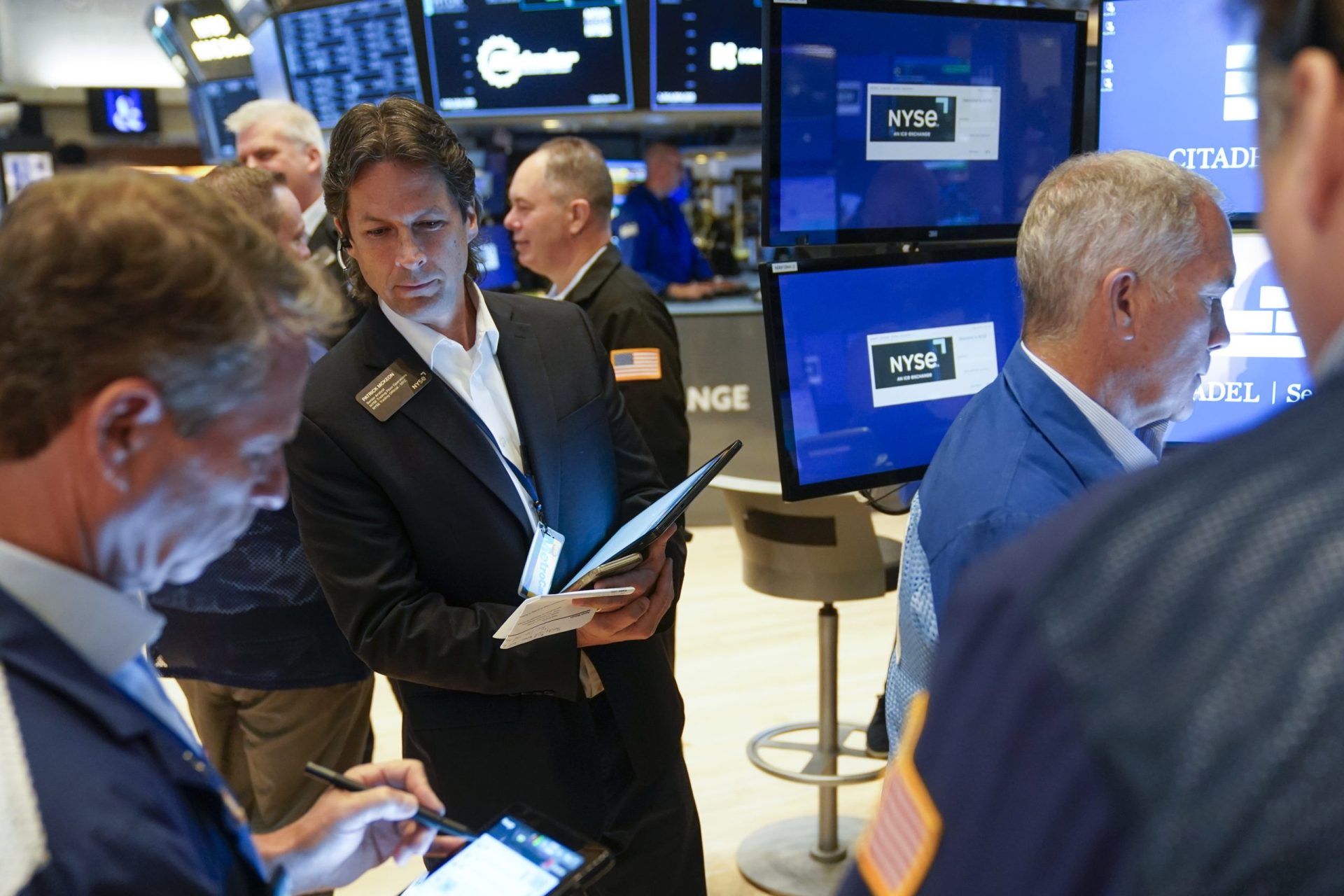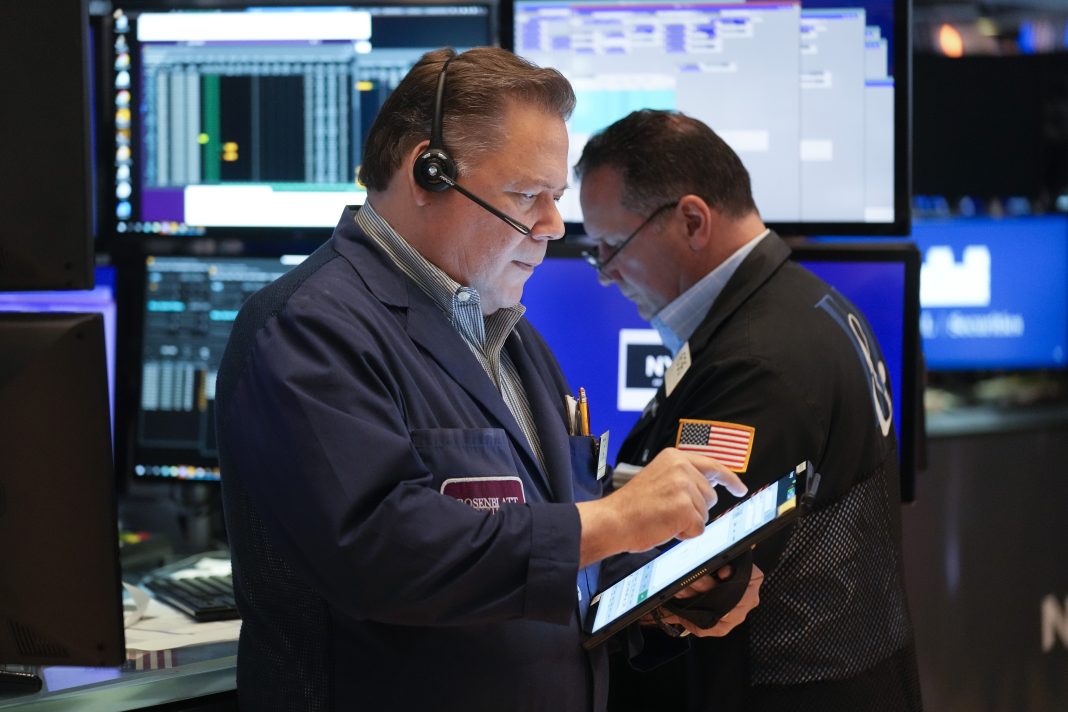|
Only have a minute? Listen instead
Getting your Trinity Audio player ready...
|
By STAN CHOE
NEW YORK (AP) — Wall Street swung to a mixed finish after the Federal Reserve hinted it may raise interest rates two more times this year, even as it held them steady Wednesday.
The S&P 500 finished the day 0.1% higher after pinballing between gains and losses following the Fed’s announcement. The Dow Jones Industrial Average dropped 232 points, or 0.7%, while the Nasdaq composite rose 0.4%.
The Fed closed its latest policy meeting by saying it would keep rates where they are, to give more time to see how its fusillade of hikes over the last 15 months is affecting the economy. It’s attempting the excruciating balancing act of slowing the economy just enough through rate increases to snuff out high inflation, but not so much as to break the job market and create a recession.
Standing pat would give the economy more time to absorb all the past rate hikes, and Fed Chair Jerome Powell said “ideally by taking a little more time, we won’t go well past the level where we need to go.” That would provide some breathing room for the economy and financial markets.
But at the same time, the majority of Fed policy makers also indicated Wednesday they expect its main interest rate to climb at least 0.50 percentage points by the end of the year. The federal funds rate is already at its highest level since 2007, in a range between 5% and 5.25%.
Even though inflation has slowed since last summer’s peak, Powell said there hasn’t been enough improvement in underlying trends to feel comfortable. He said one measure the Fed closely watches remains “far above our target and not really moving down. We want to see it moving down decisively, that’s all.”
Many traders on Wall Street came into Wednesday bracing for just one more hike this year, if any. The threat of a more aggressive Fed than expected initially sent prices tumbling for all kinds of investments.
“I do feel like things are slowly tightening, just not as fast as the Fed needs it to cause inflation to get down to their number,” said Brian Rehling, head of global fixed-income strategy at Wells Fargo Investment Institute. “The job market really has to weaken, that’s what the Fed needs.”
Brian Jacobsen, chief economist at Annex Wealth Management, said, “If they do restart their hikes and squeeze in not just one but two hikes this year, then they do risk bigger problems for the economy.”
In anticipation of future increases to rates, yields in the bond market rose following the Fed’s announcement. The 10-year yield climbed as high as 3.83% from 3.77% just before the Fed’s announcement.

It later receded to 3.79%, compared with 3.82% late Tuesday. That yield helps set rates for mortgages and other important loans.
The two-year Treasury yield, which moves more on expectations for the Fed, climbed to 4.68% from 4.67% late Tuesday and was as high as 4.78%.
Stock indexes initially sank in unison following the Fed’s announcement amid worries about higher rates, which not only slow the economy but also drag down prices of stocks, bonds and other investments.
But they pared their losses, and bond yields gave back gains as Powell spoke at a press conference, saying no decisions on upcoming rate hikes had been made and that the Fed’s next meeting in July is “live.”
“I just think the markets, and I think it’s incorrect, have a view that inflation is going to come down far enough that the Fed is going to capitulate” and halt its rate hikes and even begin cutting them, said Rehling of Wells Fargo Investment Institute. “I just don’t think that’s the case.”
“The market just wants to go up. I don’t know if people are just kind of tired of waiting for the recession, waiting for the downturn. I’m not sure what it is.”
Some of the sharpest drops in the stock market came from several health insurers after UnitedHealth Group flagged how many customers were getting knee procedures and other outpatient services done. That’s something that could raise costs for insurers, and UnitedHealth fell 6.4%. Humana dropped 11.2%.
Stocks of companies that make products used in hip replacements and other health procedures, meanwhile, were at the front of the market. Stryker rose 4.2%, and Boston Scientific gained 4.2%.
All told, the S&P 500 rose 3.58 points to 4,372.59. The Dow dropped 232.70 to 33,979.33, and the Nasdaq gained 53.16 to 13,626.48.
Wednesday marked the first time in more than a year where the Fed has not hiked rates at a meeting, after calls for a pause climbed as high rates have already caused damage in several corners of the economy.
Hikes to interest rates take a notoriously long time to take effect, and they can do so in unanticipated ways. Already, they’ve helped lead to three high-profile failures in the U.S. banking system, a monthslong contraction in the manufacturing industry and worries about a possible recession.
But inflation is still too high for comfort. It’s hurting all kinds of households, particularly those with lower incomes.
In stock markets abroad, indexes rose modestly in Europe and ended mixed across Asia. Japan’s Nikkei 225 rose 1.5%, continuing a strong run where it’s already jumped more than 28% this year.
AP Business Writers Alex Veiga, Matt Ott and Joe McDonald contributed.





